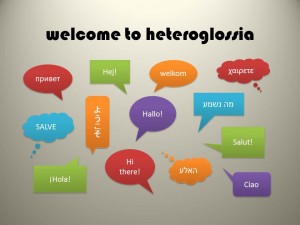“The Nine Souls of Wilde Cunningham” presents an optimistic portrayal of the ways in which the dialectic between the virtual world and the real world redistribute flows of information that socially construct identity. The startling avatar of Wilde, “with their bulky body and their orange skin, and red hair jutting in every direction from their balding head,” virtually creates an embodiment of multiple identities and multiple viewpoints.  Wilde also expresses a unique voice: they give a group of physically disabled people—otherwise marginalized within society—a mode of expression that depends on the erasure of the physicality of the real body. The Second Life presence of the group appropriates the ways in which technology initiates opportunities of communication for people with disabilities. In addition, by creating an avatar, the group’s expression supports some of the theoretical claims of N. Katharine Hayles in that the identity of Wilde is created through the pattern/randomness of the codes of text that the group expresses, instead of the physical presence of their bodies; the amalgamation of codes allows them to form social and physical interactions through a new representation of physical consciousness.
Wilde also expresses a unique voice: they give a group of physically disabled people—otherwise marginalized within society—a mode of expression that depends on the erasure of the physicality of the real body. The Second Life presence of the group appropriates the ways in which technology initiates opportunities of communication for people with disabilities. In addition, by creating an avatar, the group’s expression supports some of the theoretical claims of N. Katharine Hayles in that the identity of Wilde is created through the pattern/randomness of the codes of text that the group expresses, instead of the physical presence of their bodies; the amalgamation of codes allows them to form social and physical interactions through a new representation of physical consciousness.
The example of Wilde, too, raises awareness regarding forms of inclusion and access for people with disabilities. Wilde’s philosophic message “so be kind to others in spite of their flaws. Every soul has its disabilities” emerges as a way to reconstruct disability within a dimension which, perhaps, permeates outward and fosters awareness in order to cultivate social interactions within real life. Moreover, virtual worlds and new media provide access to life experiences otherwise unavailable to people with physical disabilities. According to Kel Smith, “For people with disabilities that prevent them from engaging in real life physical activities, virtual worlds present a unique opportunity for users to replicate the experience at an immersive level” (4). This supports the ideological immersion that virtual reality creates for its users; in fact, Smith also notes that aside from providing social therapies, “virtual reality applications have been used to augment rehabilitation therapy for patients struggling with the loss of a limb. Research demonstrates that the brain’s perception to pain can be reduced when it is “tricked” into operating a replicative appendage” (4). Here, Smith claims that virtual reality espouses both physical and mental rehabilitation.
The advantages of utilizing new media among persons with disabilities also connects to the ways in which marginal voices find agency in cyberspace. In her study, “Marginal Voices in Cyberspace,” Amanda Mitra claims that through a heteroglossic and hyperconnected digital voice, marginalized persons create a metaphor of voice that “has the potential of producing a call that the dominant has a moral obligation to acknowledge.”  Thus, Mitra recognizes the ways in which the creation of voice in cyberspace, a dialogic metaphor produced through technology, problematizes the relationship between the marginal and the dominant in real life by recognizing a crisis of acknowledgement. Hence, the refraction of voice that occurs through a cyber-heteroglossic voice recognizes a struggle of apprehension that supports Mikhail Bahktin’s assertion that “In the act of understanding, a struggle occurs that results in mutual change and enrichment.”
Thus, Mitra recognizes the ways in which the creation of voice in cyberspace, a dialogic metaphor produced through technology, problematizes the relationship between the marginal and the dominant in real life by recognizing a crisis of acknowledgement. Hence, the refraction of voice that occurs through a cyber-heteroglossic voice recognizes a struggle of apprehension that supports Mikhail Bahktin’s assertion that “In the act of understanding, a struggle occurs that results in mutual change and enrichment.”
Mitra, Amanda. “Marginal Voices in Cyberspace.” New Media and Society 2002 (March): 29-49. MLA International Bibliography. Web. 14 February 2016.
Smith, Kel. “The Use of Virtual Worlds Among People with Disabilities.” http://tcf.pages.tcnj.edu/files/2013/12/kelSmith_virtual_worlds_disabilities_032409.pdf
